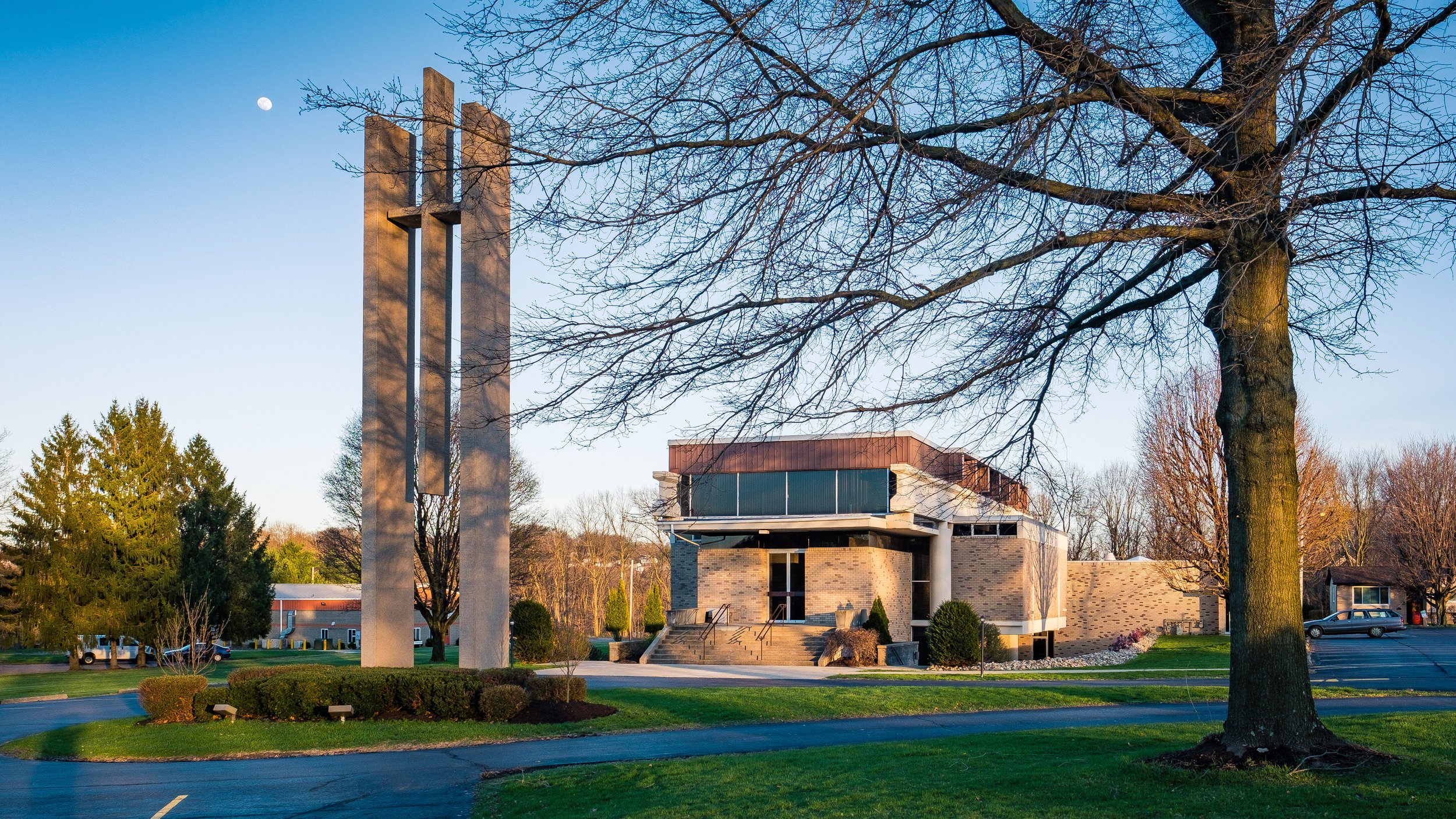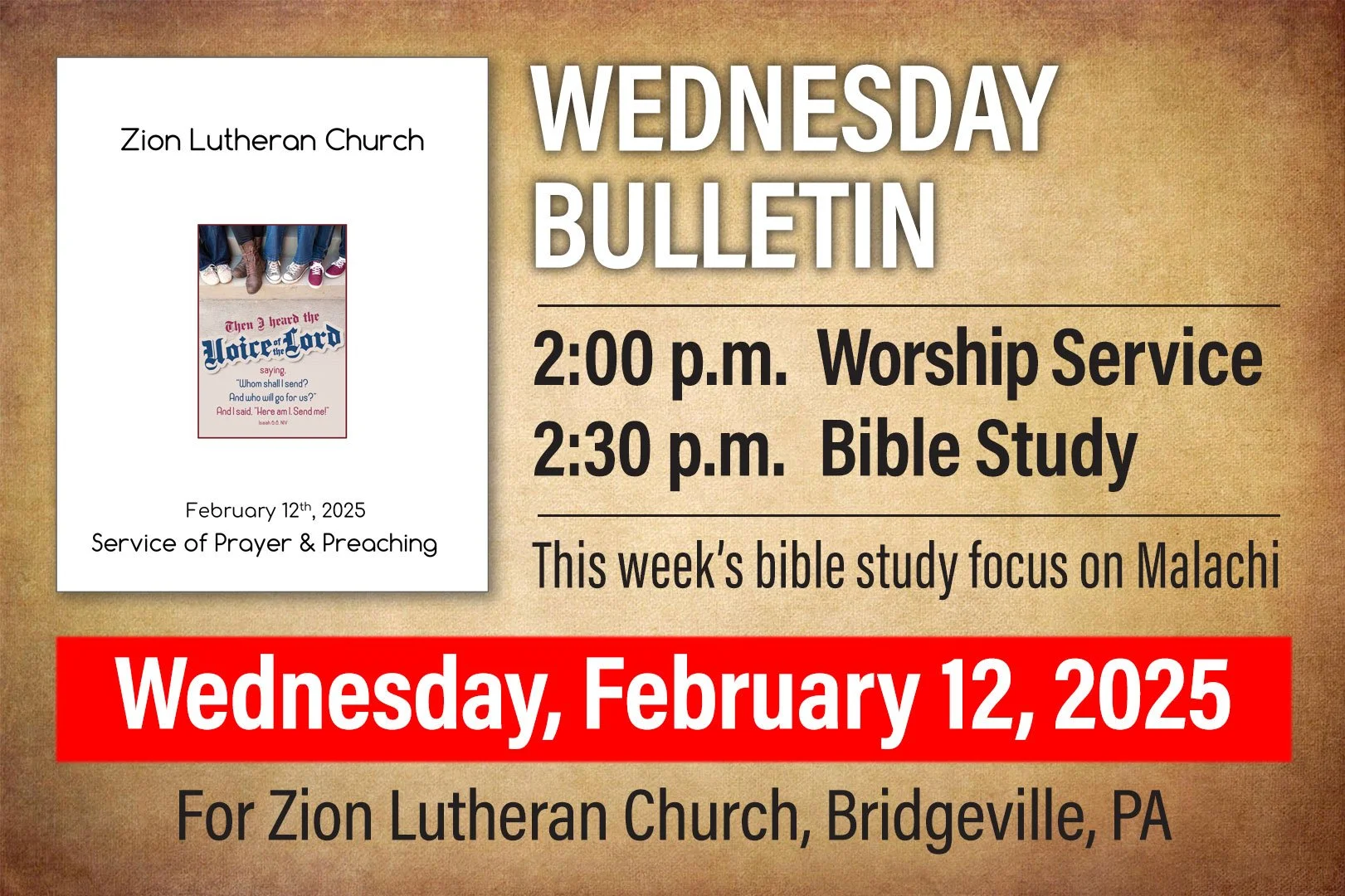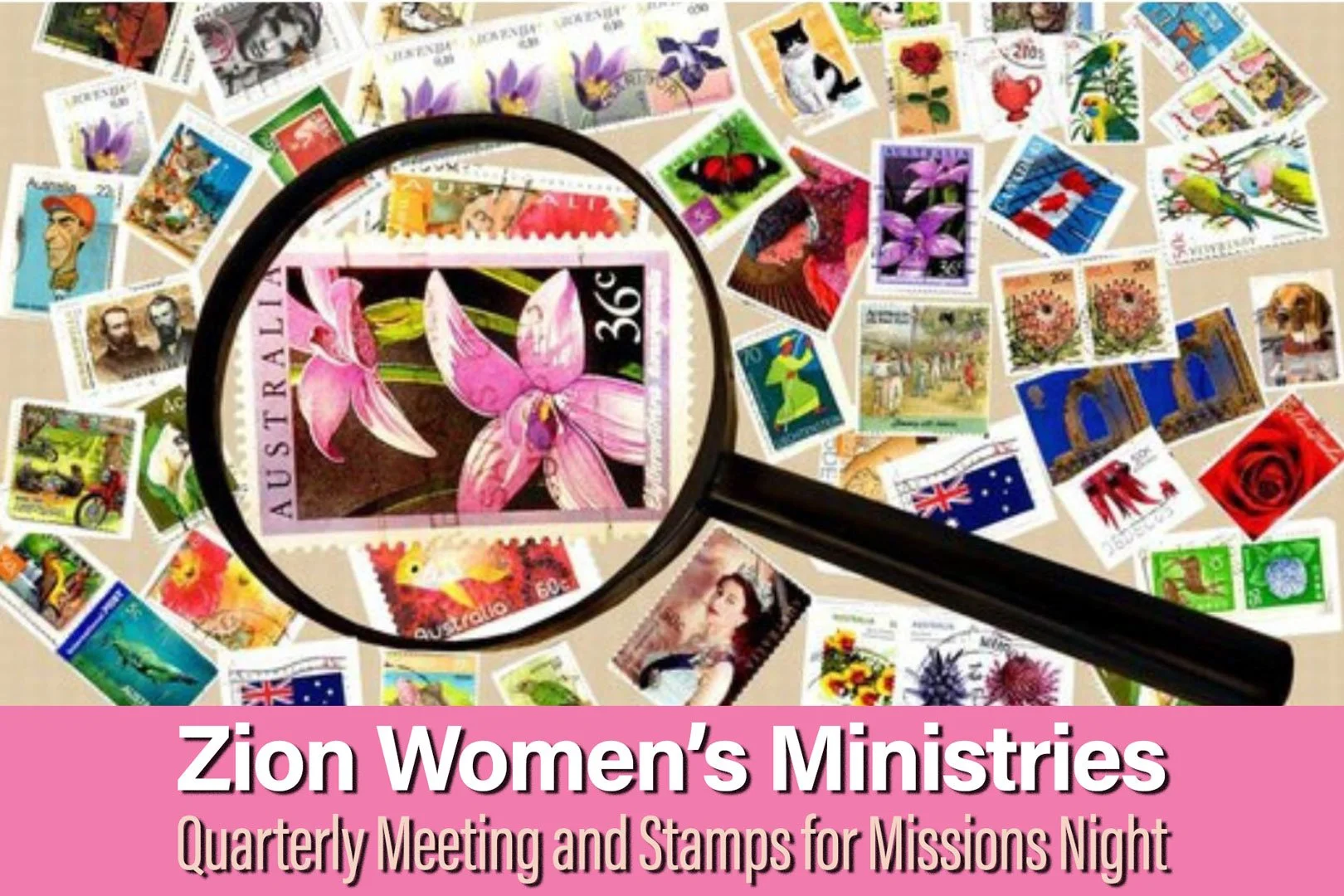
Volunteers Needed for VBS 2025
Vacation Bible School Week is …
Monday July 7th through Friday July 11th from 9:00 a.m. to 11:30 a.m.
We hope you can join us in the Australian outback! Volunteers are needed.
Volunteer Opportunities:
There are lots of opportunities to help in hands-on roles with kids, and with behind-the-scenes tasks! Volunteer all five days, or less to fit your schedule. Go to Zion's VBS webpage and click the Volunteer Form to sign up!
Student Registration will open in March … stay tuned!
Join us on an unforgettable journey with Jesus as we venture through Australia! During Vacation Bible School 2025 we will go on an Epic Australian Adventure and experience five unforgettable stories about Jesus.
Vacation Bible School Week is …
Monday July 7th through Friday July 11th from 9:00 a.m. to 11:30 a.m.
We hope you can join us in the Australian outback! Volunteers are needed.
Volunteer Opportunities:
There are lots of opportunities to help in hands-on roles with kids, and with behind-the-scenes tasks! Volunteer all five days, or less to fit your schedule. Go to Zion's VBS webpage and click the Volunteer Form to sign up … or use the button below!
Student Registration will open in March … stay tuned!
Join us on an unforgettable journey with Jesus as we venture through Australia! During Vacation Bible School 2025 we will go on an Epic Australian Adventure and experience five unforgettable stories about Jesus.
Effective Outreach (Part 4 of 4)
EFFECTIVE OUTREACH Provides Appropriate and Appealing Entry Points into Word and Sacrament Ministry
(Part 4 our 4)
This four-part series on Effective Outreach has addressed the three things that make up effective outreach. After we have found ways to create connections and build relationships with nonchurched people, we are well positioned to invite them to join us in the spiritual life of the congregation.
Click on the link below to read the complete story …
By Rev. Dr. Mark Wood, LCMS Managing Director
This four-part series on Effective Outreach has addressed the three things that make up effective outreach. After we have found ways to create connections and build relationships with nonchurched people, we are well positioned to invite them to join us in the spiritual life of the congregation.
The definition of effective outreach puts it this way:
Effective outreach is the “planting and watering” (cf. 1 Corinthians 3:5-9) through which a congregation intentionally engages nonchurched people in ways that … offer appropriate and appealing entry points (other than worship services and traditional Bible studies) that encourage nonchurched people to participate in the Word and Sacrament ministry* of the congregation.
*Word and Sacrament ministry refers to the various ways in which congregations share the good gifts of God given to us in His Word and through His Sacraments.
This definition is built on two very important things:
The first, and most important, is the understanding that disciples are made by the Holy Spirit working through the Means of Grace (i.e., through the Word and the Sacraments).
The second — which is far too often overlooked by us — is that we need to offer nonchurched people ways to enter into the Word and Sacrament ministry of our congregation which they find interesting and appealing. Most churched people realize that nonchurched people see things differently than we do. With that in mind, it shouldn’t surprise us when nonchurched people don’t see our congregation the same way that we do.
We know it as a spiritual home filled with a family of faith and caring friends. We know it to be a refuge from the despair of the world and a place of hope. They see it as a building filled with strangers who have some unusual beliefs and practices. More and more they see it as a place of judgment, intolerance, and phobias. Making the effort to build relationships with nonchurched people goes a long way to helping them see the church in a positive way.
But even having a positive view of the church isn’t enough for many nonchurched people to overcome their fear of attending a worship service or the intimidation of joining a traditional Bible study. Fear? Intimidation? We aren’t afraid of worship or intimidated by Bible studies, true, but many nonchurched people are. Even the strength of good relationships with members of the congregation may not be enough for nonchurched people to overcome their fears and uncertainties.
It is up to us to provide ways into the Word and Sacrament ministry of our congregation that ease their fears and keep them from being intimidated. That’s what is meant by “appropriate and appealing entry points” into Word and Sacrament.
It’s important to maintain the “appropriate” part of this equation. The most appropriate entry point into Word and Sacrament ministry for most people is joining us in hearing and learning about God’s Word. “Appropriate” also means guarding against turning the church into a marketplace that caters to the consumer demands of people — churched or nonchurched. But let’s not underestimate the importance of the “appealing” part. Properly understood, “appealing” calls us to consider the other person’s point-of-view.
Let me be very clear that this is NOT about worship style.
Changing to, or adding, a contemporary worship service is not what it takes to provide appealing entry points into the spiritual life of a congregation. (That’s why our definition says “other than worship services or traditional Bible studies.”)
Worship, in any form or style, is not an issue for nonchurched people (though it certainly can be for churched people). Nonchurched people do not stay away from churches because of how we worship; they stay away because we do worship and they don’t. More than that, they can’t worship the Lord. How could they? They cannot call on the name of the One whom they do not know.
This reminds us that the Church has what people desperately need, so desperately that they are perishing without it. Yet, there is little about the Church — worship or otherwise — that is very appealing from an outsider’s perspective. Changing that perspective in order to encourage nonchurched people to join us in hearing God’s word isn’t complicated or difficult. It centers on a question that we need to answer honestly: Do we care enough about the nonchurched people in our community to stretch ourselves to bring the Gospel to them in creative ways? Another question we should ask ourselves is: Are we so comfortable with our ways of doing things that we are apathetic about the needs of those who are perishing?
This boils down to a critical choice: Risk being uncomfortable in order to serve others OR stay comfortable and ignore those who are perishing.
We may not like thinking about it this way, but that’s the choice before us. By the grace of God and in the love of Jesus, we are willing to stretch ourselves for the sake of others. But how do we do it? It starts with considering the perspective of nonchurched people before inviting them to join us in sharing God’s good gifts — in ways other than worship services and traditional Bible studies. It calls for us to step back and look at what we’re doing with fresh eyes. It involves faithfully managing the tension between maintaining what has been handed down to us and responding to the ever-changing context of the world around us. But mostly it is purposefully working to offer God’s good gifts in creative ways that engage people who don’t know the love, joy, and peace of Jesus.
Questions to consider:
What entry points into Word and Sacrament ministry does our congregation currently offer that are specifically designed to be of interest to nonchurched people?
What can we do to better understand how nonchurched people view our church?
What could we change about how we do things to be more appealing to nonchurched people? How could we change it?
What should we not change about what we do or how we do it even though it may be unappealing to nonchurched people? Why shouldn’t we change it?
VIDEO: Wednesday February 12, 2025 - Complete Service
Each service at Zion Lutheran Church (normally the first of our two services) is streamed LIVE on our YouTube channel. This includes Sunday’s, Wednesday’s, Lenten, Advent and special services. The entire service is streamed from beginning-to-end. Weddings and Funerals can also be streamed, if requested in advance.
View the Bulletin for Wednesday, February 12, 2025
Worship Service: 2:00 p.m.
Bible Study (the Book of Malachi): 2:30 p.m
All are welcome, bring a friend, neighbor or relative
Visit our YouTube channel — Click the red “subscribe” box, and then click on the “bell” next to that box to receive Live Streaming notifications. You must be logged into YouTube to activate these features.
Archive of AUDIO “Readings & Sermons”
Archive of VIDEO “Complete Service”
Archive of BULLETINS
AUDIO: Readings & Sermon for Wednesday February 12, 2025
This audio-only file includes all the readings from scripture, along with the sermon — and when available, the announcements, adult choir, men’s choir, and/or bell choir. Also posted along with the audio file is the text for all the scripture readings, and a link to the current bulletin, and our YouTube channel if you prefer to watch the LIVE Stream.
View the Bulletin for Wednesday, February 12, 2025
Worship Service: 2:00 p.m.
Bible Study (the Book of Malachi): 2:30 p.m
All are welcome, bring a friend, neighbor or relative
Visit our YouTube channel — Click the red “subscribe” box, and then click on the “bell” next to that box to receive Live Streaming notifications. You must be logged into YouTube to activate these features.
Archive of AUDIO “Readings & Sermons”
Archive of VIDEO “Complete Service”
Archive of BULLETINS
Isaiah 6:1-13
In the year that King Uzziah died I saw the Lord sitting upon a throne, high and lifted up; and the train of his robe filled the temple. Above him stood the seraphim. Each had six wings: with two he covered his face, and with two he covered his feet, and with two he flew. And one called to another and said:
“Holy, holy, holy is the LORD of hosts;
the whole earth is full of his glory!”
And the foundations of the thresholds shook at the voice of him who called, and the house was filled with smoke. And I said: “Woe is me! For I am lost; for I am a man of unclean lips, and I dwell in the midst of a people of unclean lips; for my eyes have seen the King, the LORD of hosts!”
Then one of the seraphim flew to me, having in his hand a burning coal that he had taken with tongs from the altar. And he touched my mouth and said: “Behold, this has touched your lips; your guilt is taken away, and your sin atoned for.”
And I heard the voice of the Lord saying, “Whom shall I send, and who will go for us?” Then I said, “Here am I! Send me.” And he said, “Go, and say to this people:
“‘Keep on hearing, but do not understand;
keep on seeing, but do not perceive.’
Make the heart of this people dull,
and their ears heavy,
and blind their eyes;
lest they see with their eyes,
and hear with their ears,
and understand with their hearts,
and turn and be healed.”
Then I said, “How long, O Lord?”
And he said:
“Until cities lie waste
without inhabitant,
and houses without people,
and the land is a desolate waste,
and the LORD removes people far away,
and the forsaken places are many in the midst of the land.
And though a tenth remain in it,
it will be burned again,
like a terebinth or an oak,
whose stump remains
when it is felled.”
The holy seed is its stump.
1 Corinthians 14:12b–20
Since you are eager for manifestations of the Spirit, strive to excel in building up the church.
Therefore, one who speaks in a tongue should pray for the power to interpret. For if I pray in a tongue, my spirit prays but my mind is unfruitful. What am I to do? I will pray with my spirit, but I will pray with my mind also; I will sing praise with my spirit, but I will sing with my mind also. Otherwise, if you give thanks with your spirit, how can anyone in the position of an outsider say “Amen” to your thanksgiving when he does not know what you are saying? For you may be giving thanks well enough, but the other person is not being built up. I thank God that I speak in tongues more than all of you. Nevertheless, in church I would rather speak five words with my mind in order to instruct others, than ten thousand words in a tongue.
Brothers, do not be children in your thinking. Be infants in evil, but in your thinking be mature.
The Lord’s Prayer - The Conclusion
What is the Conclusion?
For Thine is the kingdom and the power and the glory forever and ever. Amen.
What does this mean?
This means that I should be certain that these petitions are pleasing to our Father in heaven, and are heard by Him; for He Himself has commanded us to pray in this way and has promised to hear us. Amen, amen means “yes, yes, it shall be so.”
Bulletin: Wednesday February 12, 2025
View the Wednesday Bulletin for February 12, 2025
Click to download the Wednesday Bulletin which includes all of the scripture readings and the Order of Service. Posted later in the day you will find an audio-only recording of the announcements (if there are any), readings and sermon. Also posted later in the day you will be able to view the entire service on our YouTube channel – broadcast live at 2:00 p.m. For an archive of bulletins visit: BULLETINS. For an archive of Sermons, visit SERMONS. For an archive of videos, visit VIDEOS.
View the Bulletin for Wednesday, February 12, 2025
Worship Service: 2:00 p.m.
Bible Study (the Book of Malachi): 2:30 p.m
All are welcome, bring a friend, neighbor or relative
Visit our YouTube channel — Click the red “subscribe” box, and then click on the “bell” next to that box to receive Live Streaming notifications. You must be logged into YouTube to activate these features.
Archive of AUDIO “Readings & Sermons”
Archive of VIDEO “Complete Service”
Archive of BULLETINS
Zion Women’s Ministries - Quarterly Meeting
Zion Women’s Ministries - Quarterly Meeting and Stamps for Missions Night
Thursday, February 27, 2025
7:00 p.m.in the Fellowship Hall
Come and decorate collection boxes for LWML Stamps for Missions. Plus, learn about the money this effort is rasing for Gospel outreach around the world!
Zion Women’s Ministries - Quarterly Meeting and Stamps for Missions Night
Thursday, February 27, 2025
7:00 p.m.in the Fellowship Hall
Come and decorate collection boxes for LWML Stamps for Missions
Plus, learn about the money this effort is rasing for Gospel outreach around the world!
We need your canceled stamps!
‘Walking together’: Historic Pennsylvania church joins LCMS
Just northwest of Pittsburgh lies the town of Ambridge, Penn. Known more recently for its namesake, The American Bridge Company, the town’s main claim to fame and history goes back much further — 200 years back — when an immigrant German religious group known as the Harmony Society (with members known as Harmonists) founded the village of Ökonomie (Economy) in 1824.
The church that the Harmonists and their leader, Georg Rapp, built between 1828 and 1831 as the focal point of their communal life still stands today. On Sunday, Aug. 18, St. John’s Lutheran Church of Ambridge, the congregation that has called that nearly 200-year-old church its home since 1912, was received into fellowship with The Lutheran Church—Missouri Synod (LCMS).
Click below to read the complete story ….
The Rev. Benjamin Janssen, pastor of First Trinity Lutheran Church, Pittsburgh, leads the procession at St. John’s Lutheran Church, Ambridge, Penn., on Aug. 18. The service celebrated St. John’s becoming a member congregation of the LCMS. (Larissa Fey)
From LCMS’ “Reporter By Kristin Straeuli
Just northwest of Pittsburgh lies the town of Ambridge, Penn. Known more recently for its namesake, The American Bridge Company, the town’s main claim to fame and history goes back much further — 200 years back — when an immigrant German religious group known as the Harmony Society (with members known as Harmonists) founded the village of Ökonomie (Economy) in 1824.
The church that the Harmonists and their leader, Georg Rapp, built between 1828 and 1831 as the focal point of their communal life still stands today. On Sunday, Aug. 18, St. John’s Lutheran Church of Ambridge, the congregation that has called that nearly 200-year-old church its home since 1912, was received into fellowship with The Lutheran Church—Missouri Synod (LCMS).
Rapp and his pietistic, millennialist sect had already departed theologically from the Lutheran church in Germany before coming to the United States in 1803. They strove to form a utopian society of communal living as they waited for the return of Christ. Economy was the Harmony Society’s third and final religious commune after establishing Harmony, Penn., and then Harmony, Ind. (later renamed New Harmony), before returning to the Pittsburgh area. They were known for their industriousness and vast business endeavors in a wide array of trades — cabinet making, wine pressing, and even manufacturing silk and velvet, to name a few — and were an influential economic force in the area.
When, for various reasons (including their advocated practice of celibacy), the Harmony Society dwindled and then disintegrated at the turn of the 20th century, the church that stood in the center of their settlement was among the imprint they left behind. Soon after, the German-Lutheran congregation, St. John’s Lutheran Church of Ambridge (est. 1907), purchased the church building and has led a full congregational life there since.
At the proper time
While St. John’s, Ambridge, has long been unwavering in their commitment to Scripture and the Lutheran Confessions, their long-time affiliation with the American Lutheran Church came to an end in 1988, when they declined to be a part of the merger that formed the Evangelical Lutheran Church in America. Instead, they remained an independent congregation, up until a recent dual-affiliation with the Lutheran Congregations in Mission for Christ and the North American Lutheran Church. In fact, they came very close to joining the LCMS in the 1980s. At that time, a young LCMS pastor serving his first call at Mount Olive Lutheran Church in Beaver Falls, Penn. (less than half an hour away), was the circuit visitor the LCMS Eastern District had appointed to dialogue with St. John’s.
Fast-forward 30-some years and that circuit visitor, the Rev. John Pingel, is now the LCMS Eastern District president. Last April, he and his assistant, Bruce Sutherland, were on their way to meetings being held at that same former parish when they received a call from St. John’s, Ambridge: “Will you come and see us? We want to join the LCMS.”
Fidelity to sound doctrine
The process to enter into membership with the LCMS went smoothly and quickly thereafter. The congregation submitted its constitution to the district for review, and also needed to hold two congregational votes to join, 30 days apart. Both votes were unanimous. “The transition was easy, as our constitution mirrored almost exactly a constitution from an LCMS church,” recalled Bob Ferry, long-time member and chairman of Trustees at St. John’s. And they weren’t the only ones being examined for their theological stance: “They questioned us, rather intently,” Pingel said of the congregation’s commitment to sound doctrine and desire to enter into this new fellowship faithfully. “I’ve never met a bunch of people so thrilled to be Missouri Synod,” remarked Pingel.
Walking together
Since that conversation in April, the saints of St. John’s have not missed an opportunity to connect with their brothers and sisters in the LCMS. Sutherland said, “They asked us about ‘synod,’ and we talked about that as ‘walking together.’ They took that and just ran with it.” Prior to even being an official member of the Synod, they were “fully engaging” with their future sister congregations in the area, getting together for Bible studies, church picnics and to socialize. The LCMS congregations in the Pittsburgh area generously donated 200 Lutheran Service Books (LSB) to the Ambridge congregation, and even had to be asked to stop giving when the church had enough!
“We were not familiar with ‘walking together.’ We thought we were isolated. It actually feels like we’re coming home,” Ferry said of joining the LCMS. In fact, the most noted part of the transition wasn’t theology or practice, as that was already aligned, but rather the familiarity and fellowship they now have with the other LCMS congregations. “And people are so excited for the fellowship.”
Dwelling in unity
The day of celebration, Sunday, Aug. 18, began with an organ recital by Jonathan Hoyt, kantor and organist of First Trinity Evangelical-Lutheran Church in Pittsburgh, followed by a church service with many pastors from the neighboring LCMS congregations of the Eastern, English and SELC districts vested in attendance. In his sermon, Pingel promised, “You don’t have to ever worry about what you are going to hear out of the mouth of one of our pastors. You will always, and inevitably, hear the Gospel of a crucified and risen Christ proclaimed.”
In the rite of reception into membership, Pingel greeted the new LCMS congregation: “With thanksgiving to God and rejoicing in the fellowship that binds us together in the faith, I welcome you on behalf of the Eastern District of The Lutheran Church—Missouri Synod, extend to you the right hand of fellowship, and formally receive your congregation into membership.” The congregational officers of St. John’s then signed the Constitution of the LCMS. Those 200 gifted LSBs, which were waiting in the pews for the occasion, were dedicated, and a luncheon concluded the festivities.
Looking forward
While St. John’s has been without a pastor in recent years, they look forward to calling one in the near future. The Rev. Paul Cwynar of Mount Olive Lutheran Church in Beaver Falls, Penn., is serving as the interim pastor. The congregation of St. John’s has long been involved in local mercy and ministry projects, such as each week providing a hot meal and fellowship for the poor, hosting a sewing group, and serving as the meeting place for Narcotics Anonymous for those recovering from addiction. “They really want to reach their community,” Pingel commented. “We’re all really excited for the future ministry opportunities.”
And they couldn’t ask for a better location to reach people with the Gospel, as the historic Old Economy Village receives droves of visitors and is the center of local festivities, for which the church gladly opens its doors and welcomes people. Anyone in the area would recognize the church tower, as it’s the symbol for Ambridge — even on the police badges and city letterhead. Due to this recognizability, the news of St. John’s joining the LCMS even received front-page coverage in Pittsburgh’s second-most-read newspaper, the Beaver County Times. Ferry reported, “Since we’ve affiliated and had our information put on the LCMS Locator tool, every Sunday we have guests coming to our church from surrounding areas, who are talking about how they want to join.” It’s as if they have just been waiting for a home in Ambridge.
Kristin Straeuli (kristinlange74@gmail.com) serves as stewardship coordinator for the Free Evangelical Lutheran Synod in South Africa.
Related Story
St. John’s Lutheran Church, Ambridge, Pennsylvania (Pittsburgh area) will officially become part of The Lutheran Church-Missouri Synod (Eastern District)
READ STORY







